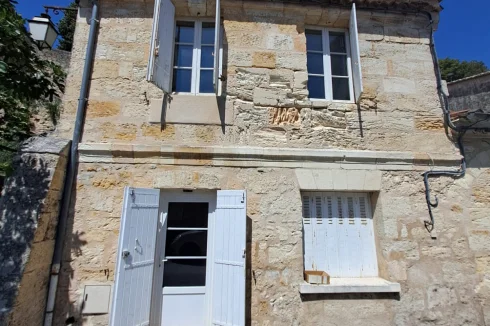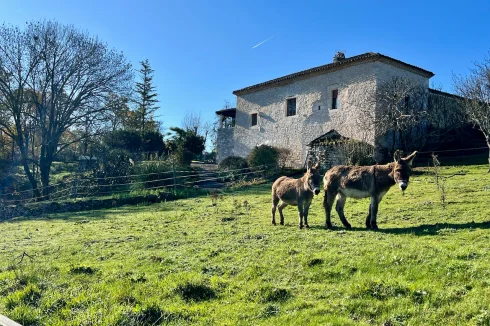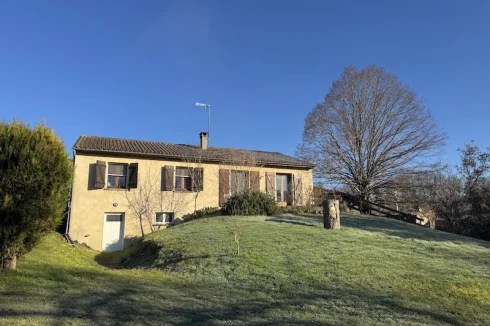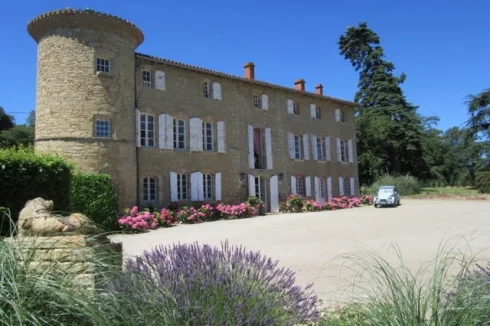Managing Your Septic Tank
Tuesday 04 December 2012
Buying a French property is often the start of many a new experience, writes Catharine Higginson.
Receiving an invitation from the neighbours for an ‘apero,’ strolling to the village boulangerie for a freshly baked baguette or simply exploring the local market, these are all often ‘firsts’ for new property owners.
Becoming the owner of a septic tank (une fosse septique) for the first time is a slightly more mundane experience, but one that is often an integral part of owning a French property.
Unlike the UK, where the vast majority of homes are connected to the main sewage system, many French properties have stand alone systems - l’assainissement non collectif - for waste disposal.
Over the last few years France has been upgrading many town and village installations and connecting households to mains drainage, known as l’assainissement collectif.
Local councils with over 2,000 inhabitants are expected to provide a treatment station and, if there is no existing system of connection in place, to provide one.
However, in some sparsely populated rural areas councils may be allowed to opt out of this responsibility and retain stand alone systems, for all or part of their administrative area. If this happens, the council is then responsible for checking that all the waste systems comply with current regulations.
Given that many councils have far fewer than 2000 inhabitants, and that properties are frequently too isolated to make connection to a main system practical, it seems that the septic tank is here to stay.
The septic tank was originally designed just to tackle sewage waste from any toilets in the house. Waste ‘grey’ water, i.e. water from sinks, showers and washbasins, was directed to a soak away in the ground or very often just left to run off into the nearest ditch. In the days before most households had washing machines and dishwashers and when bathing was a weekly affair, this might just about have worked. These days there is a clear need to prevent untreated waste water seeping into the natural environment so the standard now is for a fosse tous eaux which deals with all the waste water from the property.
With this in mind, during 2012 the local regulatory body responsible for waste management systems has been inspecting septic tanks throughout France to ensure that the installations are not polluting the environment. Inspection of septic tanks is also automatically carried out for all house sales.
These body responsible for control of the systems are known as the 'SPANC' (Service Public d’Assainissement).
Unless your system has been recently installed, it is unlikely to comply with current regulations and the SPANC will advise you on how to upgrade it to current standards..
The SPANC will need access to any inspection covers for both the tank itself and any filter bed. Older septic tanks may be totally buried and this can make them almost impossible to find. With no trace of covers, let alone the tank itself, some detective work is called for. Nettles often grow well over the soak away area and this can be a good starting point in your hunt for la fosse. You could also try asking the neighbours or the local company which empties septic tanks.
Very often, especially in rural areas, there is just one company which deals with this and they tend to know the whereabouts of each fosse. If all else fails, you will need to start digging!
In my experience the SPANC tend to be very helpful and inspectors will often go out of their way to provide you with pointers that will enable your system to comply. However, if they consider the system to be an environmental or health risk they will insist that you carry out the necessary work detailed in their report to bring the fosse up to standard. You will be allowed up to four years to undertake the work (one year following property sales). Some financial assistance may be available for this work for which you should make initial enquiries to your local mairie.
If you have bought a property with no septic tank at all you will need to start by visiting the mairie. They will be able to tell you if there are any plans to install mains drainage and, if so, when this is programmed to happen.
If not, and you need to install a septic tank, they will give you a form to complete. This is the ‘Demande d’Installation d’Assainissement Non Collectif’. Unless you have applied for permission previously and understand exactly what is required it is best to ask for a meeting with the SPANC. They will advise you as to the type of system you require. Indeed, they are likely to insist on a prior inspection before the you are granted permission to install the septic tank.
Any new installation will require a soil survey to determine the type of filtration system required and the SPANC will be able to do this. You will need to give them details of the property as this will determine the tank size.
The eventual solution they recommend will depend on the nature of the soil, its permeability, the slope of the land, the presence of bedrock and nearby wells. Depending on the proposed location of the septic tank, you may also need to install a pump to facilitate water flow from the fosse to the soak away. A grease trap - bac a graisse - will need be installed and all of these factors will affect the eventual cost of the system.
Once you have this information, you can approach a local installation companies for quotes. It is always worth asking the technician from the SPANC for a contact. They will usually recommend an installer who is efficient and will do the work to the required standard. The installer will be able to help you draw up all necessary plans, showing the position of the tank, grease traps, filtration system, inspection covers and so on that are required by the mairie for the completed application. Expect to pay anything from €5,000 to €10,000, depending on the size and nature of the system.
So how does a septic tank actually work?
There are basically two phases in a septic tank installation - the pre-treatment and the treatment stage. During the pre-treatment stage the tank stocks the water and sewage coming from the house and allows the separation of matter to occur. Floating matter, oils and grease forms a scum like layer at the top whilst the solid matter settles at the bottom of the tank. Biological action within the tank will cause liquefaction and it also produces gases such as methane and hydrogen sulphide. As well as smelling vile, these gases can be toxic in concentrated amounts which is why it is necessary to install a ventilation pipe as part of the system. This pipe will usually run up the gable end or appear through the roof and be placed as far away as possible from openings such as windows or roof windows.
The treatment stage involves purifying the pre-treated water and then allowing it to disperse into the environment. This is carried out by the microorganisms which develop within the system. They consume the organic matter in the waste water in order to live and develop and once the waste water has passed through the treatment stage, it can simply soak away into the ground.
The most common method for this final treatment stage is shallow drainage ditches containing perforated pipes laid within a thin layer of gravel, wrapped in geo-textile and then a thin layer of soil. Grass can be sown but you will not be able to plant trees or large shrubs. Some soil types will require the installation of a sand filter (filtre a sable). These work on the same principle but require the addition of layer of sand plus an extra layer of gravel. Sand filters are more expensive to install so it is always good news when the soil technician tells you that you don’t need one!
If the system has been correctly installed, the size of the tank is right for the house and the fosse is emptied at regular intervals, living with une fosse septique should pose no problem.
Make sure that nothing is flushed down that cannot be broken down by microorganisms and if you rent out your property or have lots of visitors, a ‘warning’ notice is a good idea.
If the property is a holiday home you may want to consider a microorganism starter kit. These reactivate the breakdown process after a period of inactivity, as does live yoghurt. They are widely available in supermarkets and DIY stores and many people in permanent residence also use them to ensure that the micro-bacterial process is working at full capacity. Most cleaning products are marked to indicate whether they are fosse friendly and ideally, bleach based substances should be avoided.
Your septic tank will need to be emptied according to use. Obviously a couple in a holiday home will generate far less waste than a family in full time residence but a general rule of thumb is to clean the grease trap every six to twelve months and have the tank emptied every three years.
Installing a waste system is a major undertaking and if possible, it is wise to do this at the start of renovation works to give the ground time to recover.
This posting has been supplied courtesy of www.survivefrance.com
Thank you for showing an interest in our News section.
Our News section is no longer being published although our catalogue of articles remains in place.
If you found our News useful, please have a look at France Insider, our subscription based News service with in-depth analysis, or our authoritative Guides to France.
If you require advice and assistance with the purchase of French property and moving to France, then take a look at the France Insider Property Clinic.





